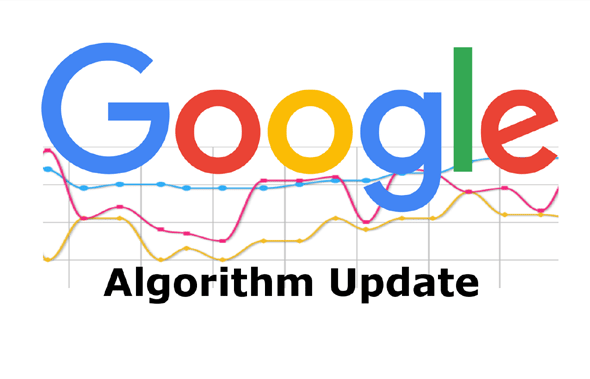Did you just launch a new website that’s up to the latest SEO, user experience and content best practices? Great! Now keep going.
As much as we wish they were, websites are never finished. There are always tweaks to be made to metadata, new content to be added or graphics to update. It’s easy to be lulled into thinking that you can ‘set it and forget it’. But getting into that mindset will have you falling behind before you know it.
 Keeping up to date on your website is important. It shows that you are current with your products and services, as well as with the times. No one wants to look at a website with outdated photos, misinformation or bad links.
Keeping up to date on your website is important. It shows that you are current with your products and services, as well as with the times. No one wants to look at a website with outdated photos, misinformation or bad links.
Keeping your website fresh and up to date doesn’t need to be difficult. As a matter of fact, there are a few key actions you can take monthly, quarterly and yearly to stay on track and on top of things.
The following is a quick list of what, when and why you should be making adjustments to your site:
Real Time
• New products – New product updates on your website should be done in real time and as new products hit the market. You want to keep the product section of your website current, so customers and potential customers see what you have to offer. You want to be sure to remove products from your site that have been discontinued and are no longer sold.
- Timing: Add new products as they’re released. If you don’t have any new products, you should at least try to freshen up the copy describing the products and the photos that accompany the products at least once a year or once every two years.
• New events – Posting new events like tradeshows, webinars and promotional events on your website lets visitors know where you will be or what you are up to and give them an opportunity to see your products in person. It also shows that you are current within the industry.
- Timing: Events should be posted at least one to two months before they take place. Once the event is over, the announcement should be taken down from your website or placed into an archive. If not, it makes your site and company look out of date and unprofessional.
• New content – Brochures, datasheets, whitepapers, videos. It is important to have these collateral pieces on your website because they give visitors information at their fingertips without having to wait. Keeping these pieces fresh and up to date is important because you don’t want someone looking at an old brochure or old specs. You especially don’t want them watching outdated videos.
- Timing: These pieces of collateral should be updated on your site as you update them for print or when you create anything new.
Monthly
• Site plugin updates – A plugin on your site is a piece of software that acts as an add-on to a web browser and gives the browser additional functionality. Plugins can allow a web browser to display additional content it was not originally designed to display. Plugins increase your site’s security by patching vulnerabilities and strengthening it against attacks. They also help reduce the risk of your site being hacked or compromised in some way.
- Timing: These updates should be performed once a month.
• New blog posts – Blog posts are basically online journal entries where people can share their experiences or share information with other readers on any topic. Blog posts not only help your company rank on search engines, but they also help to share information about a topic as well as position you as a thought leader in the industry.
- Timing: Blog posts should be posted least once or twice a month.
Quarterly
• Traffic trends and analytics – Website traffic is information about every user that visits your site and how often they visit. Analytics is the process of collecting and interpreting key data points that show the web traffic to and from your site. Wanting to keep an eye on this information is important because it lets you know if your marketing strategy is working, if your content is interesting and who you should be targeting.
- Timing: Check analytics at least once a month or quarterly. Once you pick a schedule, stick to it so that you will know when things are doing better or worse.

• Internal links – Internal links are links between pages on your website. You want to ensure that these links work and are linking to the most updated content. There is nothing worse than going to click on a link for more information and it doesn’t work and sends you an error message.
- Timing: These links should be checked after any new information is added to your site or at least once a quarter to check against bounce rates.
• A/B testing and heat maps – A/B testing allows you to try out different variations of your website to see which converts best. This is important because it can tell you the combination of elements that helps keep visitors on your site longer. The more time visitors spend on your site, the more likely they will discover the value of your content and ultimately lead to a conversion.
Heatmaps can identify where and why users are getting confused on your site. Heatmaps help with data analysis and give you a snapshot of how people interact with an individual page on your site. It can tell you what they clicked on, what they scrolled through (or ignored). This helps you identify trends and optimize for further engagement with this user.
- Timing: A/B testing and heat maps should be run for at least one or two weeks before comparing results, sometimes longer depending on your website traffic.
• Contact/download forms and CTAs (calls to action) – Contact or download forms and CTAs should be reviewed to determine if visitors are converting. If you’re doing A/B testing, follow those recommendations to review the comparison data. Otherwise, review the page analytics when you pull other website data.
- Timing: CTAs should be updated when you’re no longer getting conversions at the desired rate. Otherwise, these can be looked at once a quarter or yearly to revise, if needed.
Yearly
• Page and image metadata – Metadata is information about a page, image or other media on a site that is used by search engines to include the item in appropriate search engine results pages. Title, alt text, featured snippets, etc. should all be set when content is added to the site.
- Timing: It is important to keep this up to date as new content is added and check on it once a year to make sure previous metadata still conforms to best practices.
• Timely graphics – Be sure to keep your graphics, photos, charts, etc. up to date. Old statistics or photos make your site look outdated and could have people question if your information is accurate, losing trust and ultimately potential customers.
- Timing: This should be done as new information becomes available or at the very least, once a year.
• Contact info – This sort of information, especially individual contacts, should be reviewed often and updated as soon as someone leaves or joins your organization. There is nothing more frustrating than looking at a website for contact information only to find out that the person has moved on or a phone number or email address has changed.
- Timing: Taking a quick glance at your company’s contact info at least once a year if there are no major changes should suffice.
• SEO audit – This type of audit analyzes how well your web presence relates to best practices. It helps you create and implement an SEO plan that will have measurable results. An SEO audit is important in helping you identify strengths, weaknesses and your website’s long-term success. It also helps you identify the technical problems with your website that are restricting search engines to crawl through your site or understand content.
- Timing: You should do an SEO audit quarterly or at least yearly.

• Check latest Google algorithm best practices – Google’s algorithms are a complex system that retrieves data from its search index and instantaneously delivers the best results for an inquiry. Google uses a combination of algorithms and a number of different ranking factors to deliver webpages ranked by relevance on its search engine results pages. Google changes its algorithms a few times per year. These changes can directly impact your page performance.
- Timing: In order to stay current, be sure to look for a core update at least once or twice a year and accompanying updated best practices.
By staying on top of your website and checking in with the key factors we listed above monthly, quarterly or yearly, you will remain on track and continue to attract visitors to your site.
